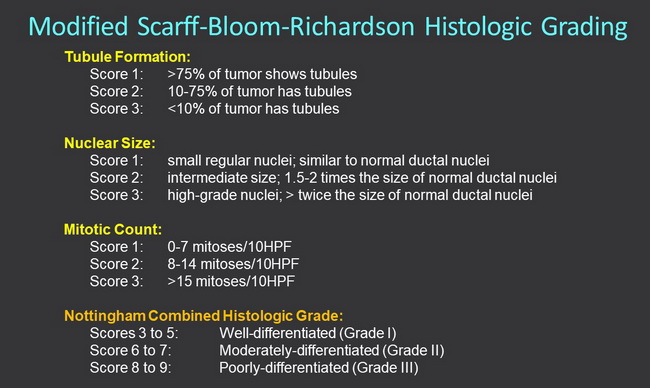Scarff-Bloom-Richardson Histologic Grading


Comments:
Grading of ductal carcinoma of breast is performed on the invasive component. It is an estimation of the degree of differentiation of the tumor. The currently used histologic grading system is known as the Elston-Ellis modification of Scarff-Bloom-Richardson grading system OR Nottingham Combined Histologic Grade. Histologic grade is a powerful prognostic indicator. There is a significant correlation between histologic grade and frequency of recurrence, disease free survival, and overall length of survival regardless of clinical stage in invasive breast carcinoma. The histologic grade is based on the degree of tubule/duct formation, nuclear size and pleomorphism, and mitotic rate. A numerical scoring system is used where each feature is assigned a score from 1 to 3. The final histologic grade is assessed from the sum of all three scores. Scores 3 to 5 = well-differentiated (Grade I); Score 6 or 7 = moderately differentiated (Grade II); and score 8 or 9 = poorly-differentiated (Grade III).



